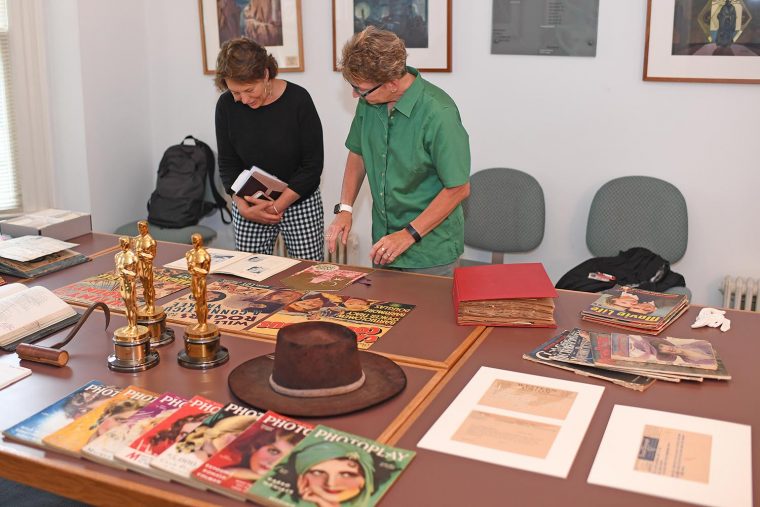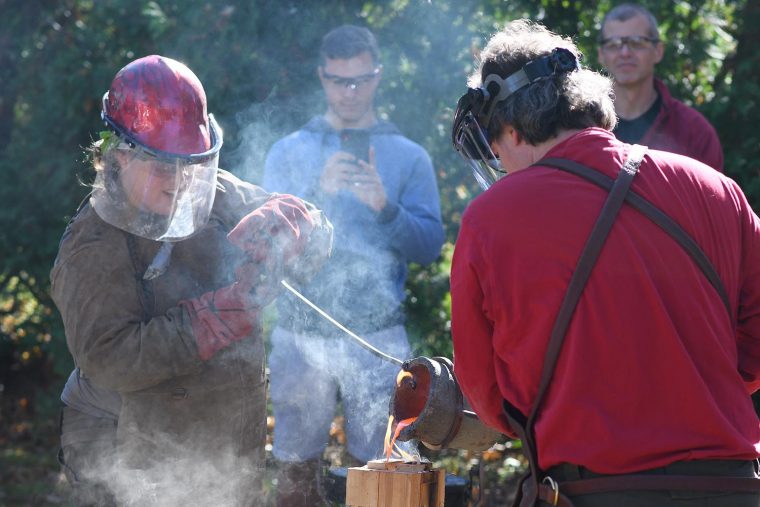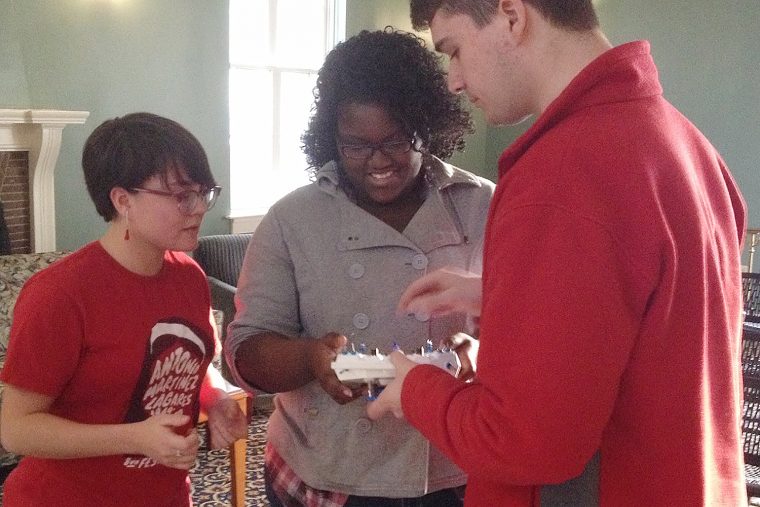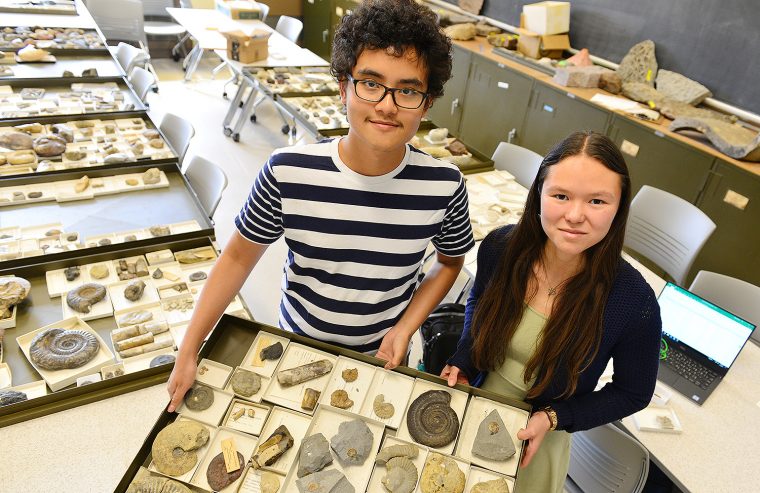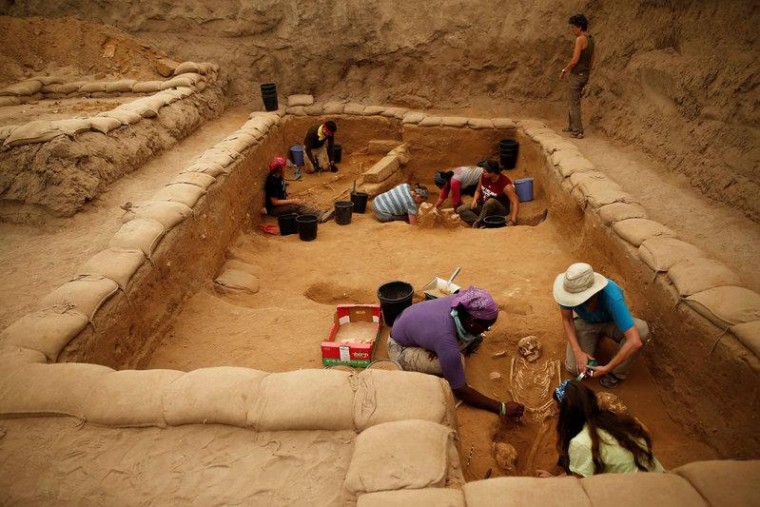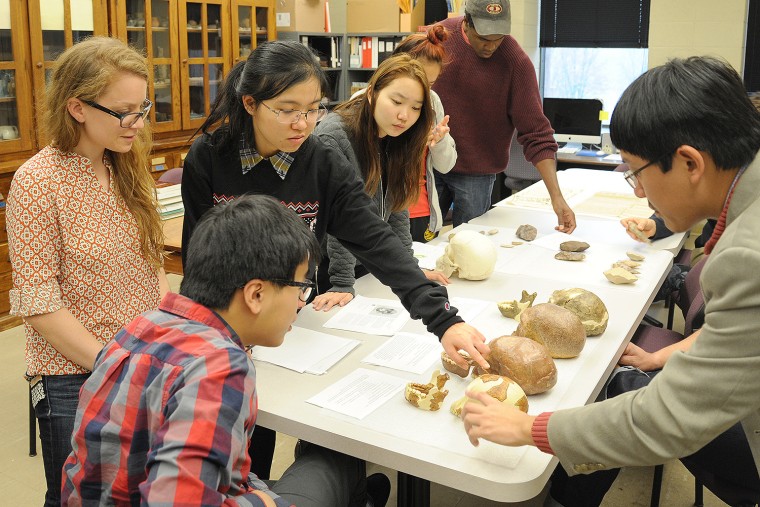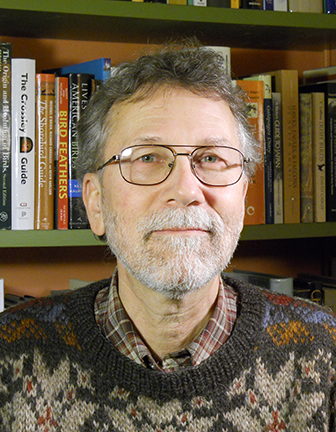There was something about Kate Birney's research that smelled a little off. As far back as the 4th century B.C., Greece was a global leader in producing a plethora of posh perfumes sold in handcrafted ceramic bottles marked with three chalky-white stripes. "Much like today, some of these ceramic perfume bottles were 'branded'—made in distinctive shapes, and painted or decorated in distinctive ways—probably to tell the consumer what scent they contained, or which perfume house/region they were imported from," said Birney, associate professor of classical studies and chair of Wesleyan's Archaeology Program. So when similar bottles, or unguentaria, were excavated…
From fish fossils to film memorabilia to 1880s Arguses to Korean zithers, Wesleyan University is home to thousands of artifacts and teaching tools that are available through a multitude of collections. Learn more about some of Wesleyan's major collections below, as they are among the best of Wes! Schedule your visit today! THE ODGEN AND MARY LOUISE REID CINEMA ARCHIVES (website): THE JOE WEBB PEOPLES MUSEUM AND COLLECTIONS (website): (more…)
Students taking the CCIV/ARCP 153: Single Combat in the Ancient World course learned how to cast their own bronze sword and arrowhead during class on Oct. 24. The process is a modern-day method of how weapons would have been crafted during the Late Bronze Age (3000 to 1200 BC). The two-hour workshop was taught by Connecticut bladesmiths Barbara Wechter of Wechter Arms and Matt Berry of Hopkins Forge. Berry is a former contestant on History Channel's "Forged in Fire." While Berry heated molten bronze (copper and tin) to 1,900 degrees Fahrenheit, Wechter demonstrated how to build a mold from oil-based…
The scent of ancient perfumes evaporated eons ago, but scientists are able to reconstruct their ingredients by analysis of the residues left on their containers. Up until now, however, such studies have largely been isolated in the scientific literature, disconnected from the textual and archaeological data that place these perfumes back into the hands of their ancient users. Kate Birney, assistant professor of classical studies, archaeology, and art history, is hoping to change that as co-architect of the OpenARCHEM project, which seeks to assemble the largest set of organic residue samples ever collected from archaeological artifacts around the Mediterranean. Built…
On March 28, the Archaeology Program and the Department of Classical Studies invited Ian Roy of Brandeis University to Wesleyan to discuss ways new technologies are used to study the past. Roy is the founding head of Brandeis MakerLab and director for research technology and innovation at Brandeis University's library. Roy first visited the Archaeometry: How to Science the Heck out of Archaeology class taught by Andrew Koh, visiting assistant professor of archaeology. There, he demonstrated how to scan objects in 3-D using an Artec Space Spyder, a tool that uses structured light to capture incredibly high-resolution scans of objects. The class produced multiple models of artifacts, including a…
In this recurring feature in The Wesleyan Connection, we highlight some of the latest news stories about Wesleyan and our alumni. Recent Wesleyan News Rolling Stone: "Bethesda Founder Christopher Weaver on the Past, Present and Future of Video Games" Christopher Weaver MALS '75, CAS '76, the Distinguished Professor of Computational Media in the College of Integrative Sciences, is profiled. 2. Transitions Online: "The Search for a New World Order, Then and Now" Peter Rutland, the Colin and Nancy Campbell Professor in Global Issues and Democratic Thought, writes that a century after President Woodrow Wilson promulgated his "14 points" to guarantee world…
Scattered throughout campus are remnants of not only Wesleyan's history, but world history. After the closing of the Wesleyan Museum in 1957, thousands of specimens in many collections were displaced, often haphazardly, to nooks, crannies, tunnels, attics, storage rooms, and random cabinets at Exley Science Center, Judd Hall, and the Butterfield and Foss Hill residence complexes. Many of these specimens haven't been accessed in 60 years. "Sadly, few people are aware that Wesleyan has these unique resources," said Ellen Thomas, the University Professor in the College of Integrative Sciences and research professor of earth and environmental sciences. "The collections have not been…
The Ancient Romans relied on a curious object to tell time: a sundial in the shape of an Italian ham. National Geographic has featured the work of Wesleyan's Christopher Parslow to re-create this ancient "pork clock" through 3-D printing, which is helping researchers to better understand how it was used and what information it conveyed. "It does represent a knowledge of how the sun works, and it can be used to tell time,” said Parslow, professor and chair of Classical studies, professor of archaeology, professor of art history. The small, portable prosciutto sundial —the "pocket watch of its day," according to the article—was…
Two Wesleyan students, one recent alumna and a faculty member contributed to a groundbreaking discovery of the first Philistine cemetery, a crowning achievement of more than 30 years of excavation in Ashkelon, Israel. Archaeologists and scholars have long searched for the origin of the Philistines, and the discovery of the cemetery is poised to offer the key to this mystery. Findings from the cemetery, dated to the 11th–8th centuries BCE, may well support the claim – long inferred and recorded in the Bible – that the Philistines were migrants to the shores of ancient Israel who arrived from lands to the…
In the 1920s, a team of scientists working in the Zhoukoudian cave system in Beijing, China unearthed Peking Man, a roughly 700,000 year-old sample of Homo erectus. After the communist revolution of 1949, Peking Man became a prominent figure in bringing science and the story of human evolution to the masses. As part of the required reading for the HIST 368 class, History of Science and Technology in Modern China, Ying Jia Tan, assistant professor of history, is having his students read The People's Peking Man, written by Wesleyan alumna Sigrid Schmalzer '94. The People’s Peking Man offers a skilled…
On Oct. 5, Phillip Wagoner, professor of art history, professor of archaeology, was named a co-recipient of the American Historical Association's John F. Richards Prize in South Asian History. The John F. Richards Prize recognizes the most distinguished work of scholarship on South Asian history published in English. Eligibility includes books on any period or field of South Asian historical studies and works which integrate South Asian history with broader global issues and movements. Wagoner shares the prize with Richard Eaton of the University of Arizona. Together, they co-authored the book, Power, Memory, Architecture: Contested Sites on India’s Deccan Plateau, 1300–1600,…
On Sept. 16, students enrolled in the PSYC221 Human Memory course used the Wesleyan University Archaeology and Anthropology Collections for hands-on learning. The class, taught by Erika Fulton, visiting professor of psychology, visited the collections to learn more about memory and the brain. Students compared and contrasted three skulls from disparate time points in human evolution and used their observations to make inferences about how different parts of the brain must have evolved. "They had to think about the relationships among a changing environment, memory demands, and brain lobe development," Fulton said. "I think it was a fun way for them to…



